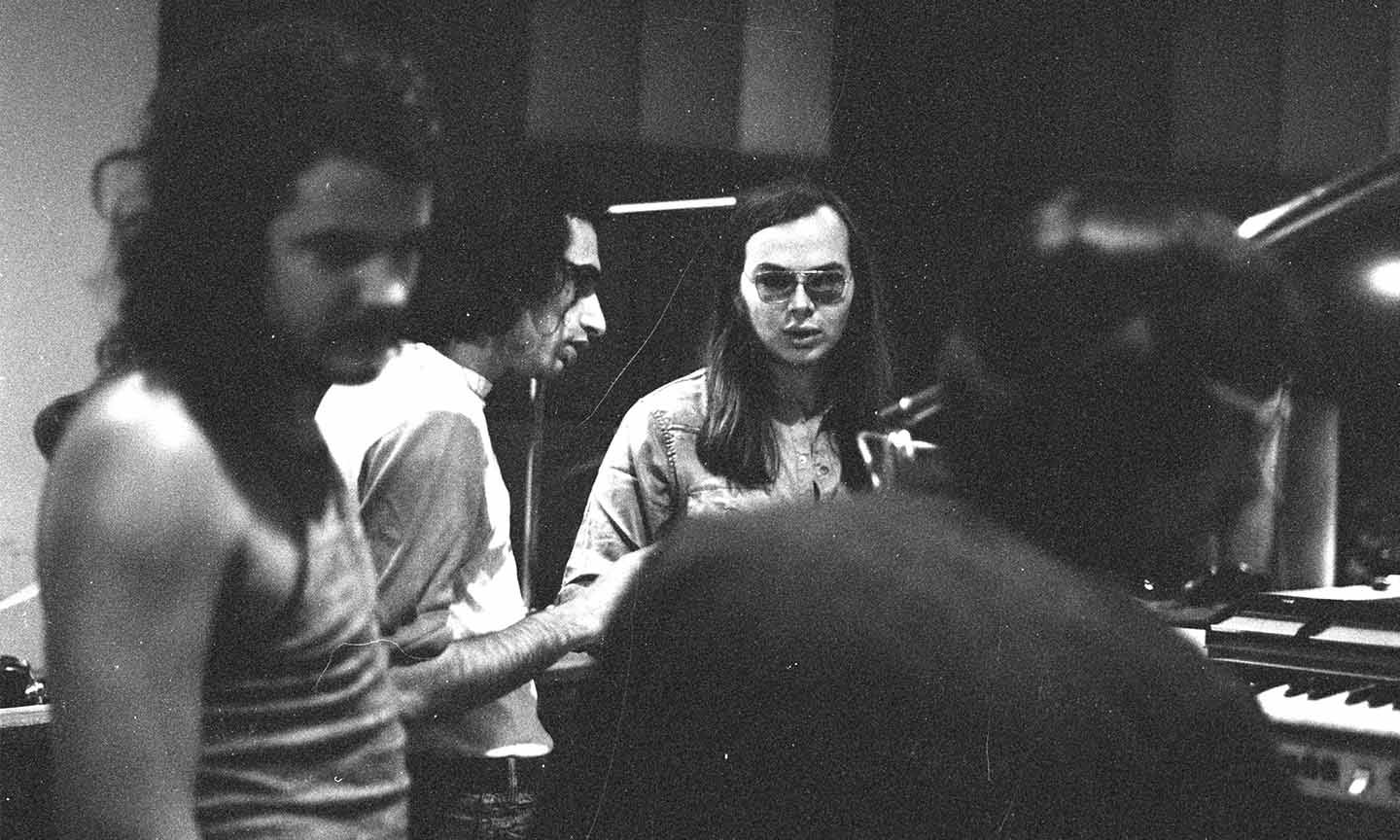In September of 1977, Steely Dan’s tireless attempts of audio perfection were achieved with their sixth studio album - the jazz-rock staple that is Aja. The primary figures of the group, Donald Fagen and Walter Becker, enlisted the services of almost 40 musicians for the album, including Jazz virtuoso Wayne Shorter. What was achieved was a critically acclaimed record that audiophiles and jazz-fusion enthusiasts revel in. Here are some words on Aja.
As mentioned in my ‘Playlist of the Week’ piece on Steely Dan, the band is brutally polarising. Not ‘jazz’ enough for the jazz-heads, too jazz-oriented for the rock aficionados, Donald Fagen and Walter Becker managed to slip through the cracks of conventional music labels, and vigorously appeal to those who truly love genre fusion and high-fidelity. Akin to Fagen’s famously aloof nature, Steely Dan was distinct in its refusal to commit to radio conventions, with tracks reaching lengths of 8 minutes long. Where Can’t Buy A Thrill (1972) felt experimental as the band’s first attempt at music stardom, jumping from the CS&N-esque ‘Dirty Work’ and Latin-Rock inspired ‘Do It Again’, Aja has the instrumental constancy of a concept album.
Aligned with this idea, ‘Black Cow’ (track one) immediately sets the album up as Steely Dan’s most progressive yet. The song is a nostalgia trip for those growing up in 1950s East Coast USA; the title referencing an ice cream float drink popular in soda shops at the time. Traditional to the band’s lyricism, the song’s setting is seedy, with unsavoury characters; the perspective of a man reminiscing on his relationship with an ‘unsuitable woman’ , who is “so outrageous”. It begins with a brawny bass guitar line from Chuck Rainey, alongside Paul Humphrey’s punchy, meticulous drumming.
Yet, it is Tom Scott’s mellow tenor saxophone that gives ‘Black Cow’ its rich vibrations - a feeling which expands across Aja as a whole. Midway, Victor Feldman’s gleaming electric piano solo stresses the freestyle jazz elements of the song, before the drums and sax firmly build back up into Fagen’s breezy vocals in the chorus segment. The song fades to an end with Scott’s bright sax solo leading the way out - shouts of “so outrageous” emerging from time to time.
The album’s title-track, ‘Aja’, places the listener in a phonic void from the beginning, with echoing piano segments and Steve Gadd’s sparse, freeform drumming style. From Feldman’s marimba playing to references to “Chinese music under banyan trees”, ‘Aja’ decidedly rejects Western ideals. It’s strange to remember this is the same duo that wrote ‘Reelin’ In The Years’ just five years prior. The instrumental middle of the song has a robust, powerful feel to it, with Gadd leading the way with distinctive drumming experimentation. At the 4:40 minute mark, Wayne Shorter’s staggering sax solo comes in, slowing itself down, then speeding up, accompanied by sharp piano stabs. After the final verse, Gadd comes crashing back in with a continuation of his solo, with Fagen himself playing synthesiser fills - the environment is almost psychedelic.
From the eccentric, otherworldly ‘Aja’, ‘Deacon Blues’ (track 3) brings the listener back down to Earth. Arguably, this song has some of the best lyrics Fagen and Becker have ever written:
“This is the night of the expanding man
I take one last drag as I approach the stand
I cried when I wrote this song
Sue me if I play too long
This brother is free
I'll be what I want to be”
Fagen has noted the song to be autobiographical, telling the tale of a suburban kid who is fixated on Beat culture, and the convolutions of the jazz genre. The narrator “crawl[s] like a viper through these suburban streets”, portraying a sleazy, dismal image of city life, which was accurate for most people in 1970s New York and Southern California. The chorus is eerily upbeat despite lyrics regarding “d[ying] behind the wheel” after “drink[ing] Scotch whiskey all night long”. When thinking on Steely Dan’s sardonic, cutting lyrics, ‘Deacon Blues’ is the first song that comes to mind.
‘Peg’ (track 4) is a fan favourite. It’s catchy, it has Michael McDonald on backing vocals - who could ask for more? The song’s famous guitar solo was attempted by around seven studio session guitarists, including Larry Carlton, who had performed on both Katy Lied (1975) and The Royal Scam (1976) previously, but Fagen and Becker landed on Jay Graydon for the final cut. Compared to ‘Aja’s slow, outlandish aura, and ‘Deacon Blues’s caustic environment, ‘Peg’ is bright and light-hearted.
Both ‘Home At Last’ and ‘I Got The News’ are tracks I remember as piano-heavy. The former begins with bouncy stabs, before harmonic saxophone segments blend in. It is an ode to The Odyssey by Homer, an epic poem in which Ulysses attempts to sail home after the Trojan War through a storm controlled by the gods. Fagen solos, again on the synthesiser, before Becker’s guitar solo folds in - it’s nice to see the two play back-to-back.
‘I Got The News’ dives into the realities of musical stardom, perhaps another autobiographical track. Again, we get McDonald’s vocals in the bridge of the track, beginning with “Broadway Duchess". Becker and Carlton solo on guitar in this track, yet, as mentioned, it is Feldman again on piano that creates the song’s vibrant energy.
‘Josie’ ends Aja with a groovy ‘bang’. Rainey charms again with sensational bass guitar playing, yet it has to be Jim Keltner’s tight drum playing that takes centre stage for this track. Out of all the tracks on Aja, I have to say Fagen’s vocals stood out the best on ‘Josie’ - resonant and full. It is a captivating end to a brilliant record.
Aja cannot be pinned down. Whether it be by genre definitions, general ambience, or the musicians that perform on each track, the record is entirely unconventional. However, it is this eccentricity that gives the album its genius qualities. Whether you hate them or you love them, it is undeniable that Steely Dan are masters at their craft.









Favorite Steely Dan album ever!
Shorter’s masterpiece work on Aja is truly without comparison.